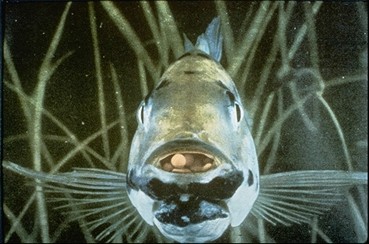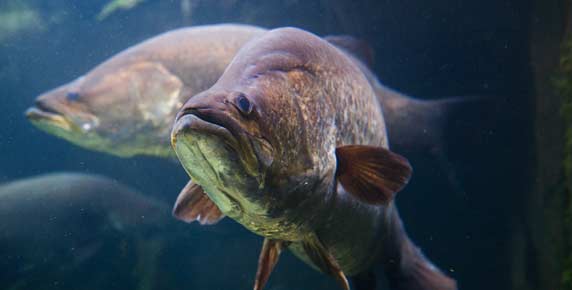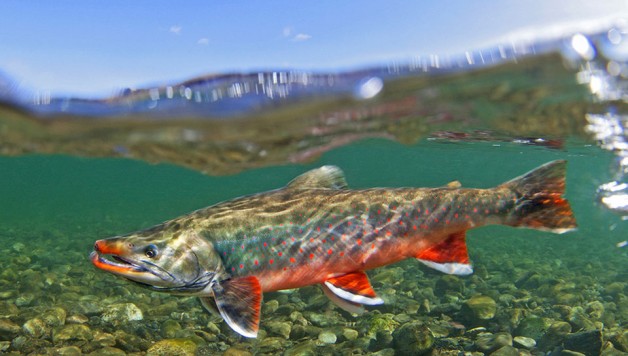A variety of aquaponic fish can be used in aquaponics operations. Which type of aquaponic fish one should choose for his or her system depends on practical matters such as water temperature and pH, as well as personal preference between edible fish and those that are solely (pun not intended) ornamental. There are many more options than those covered on the following list. The list is basically designed to provide a quick overview of some of the more common aquaponic fish options.
1. Tilapia
A very popular option, Tilapia is a great choice for a couple of reasons. First, due to its marketability (if you’re looking to profit from fish production, otherwise it’s just very tasty). Second, due to its ability to tolerate constantly-fluctuating water conditions such as pH, dissolved solids, temperature, and oxygen. Such resilience is key in less sophisticated systems that make it more difficult to control said variables.

Tilapia aren’t always this eerie-looking. Image via massmind.org
2. Goldfish
Goldfish are a great ornamental option to use in a hydroponics system. They obviously aren’t a prime option for consumption. However, much like tilapia, goldfish are cheap and noted for their ability to tolerate a wide range of water temperatures and pH levels.
3. Koi
Koi can be tasty, but are primarily thought of as ornamental species in aquaponics systems (they can more easily be sold to a pet store than as a food source.) They are ideal for aquaponics for the same reason that goldfish and tilapia are: resiliency in constantly-fluctuating water conditions.
4. Arctic Char
As their name implies, Arctic Char are best suited to colder water temperatures. They possess a natural desire to shoal, as well as live in, high-density conditions. This makes them ideal for aquaponics and other land-based aquaculture. They are a solid food option, as they are in the same family as salmon and trout, and possess characteristics of each when it comes to taste.
5. Trout
Trout are also best-suited for colder water conditions, preferring temperatures below 60 degrees. They are ideal for aquaponics since they grow rapidly, and have a high feed conversion ratio.
6. Bass
Bass are a good option in larger aquaponics operations, as they grow to a rather large size. As adults, they tend to feed on smaller fish, such as crayfish and bluegills, which can be somewhat expensive to provide. They thrive in milder water conditions, between 60 and 96 degrees.
7. Barramundi

Barramundi wishing he were part of an aquaponics system. Image via underwaterworld.com.au
While typically used in Australian setups, Barramundi have recently caught on in the U.S. They can ultimately be very productive fish. However, they can also be relatively high-maintenance, as smaller fry fish have a tendency to eat eachother. Additionally, they are known for producing large quantities of excrement, which can obviously present problems in the absenceof an adequate filtration system. They are rather picky when it comes to water conditions, requiring good quality and warm temperatures around 78 to 82 degrees.
8. Murray Cod
Native to and primarily used in Australia, Murray Cod grow rapidly and will eat anything that can fit in their mouths, including smaller fish. They survive best in a pH of 7.0-8.0. Both Murray Cod and Barramundi can be stocked denser than Tilapia, making them more productive. Murray Cod typically prefer a cooler temperature range between 46 and 75 degrees.
To learn more, I would recommend checking out our friend Sylvia Bernstein’s aquaponics fish FAQ page at theaquaponicsource.com, which features a good deal of logistical information.
